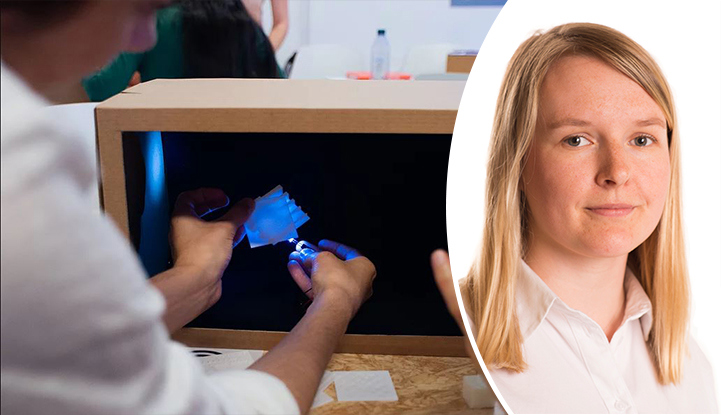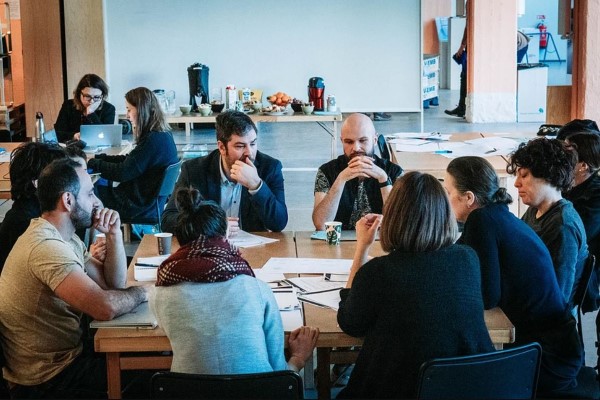Unique collaboration bridges the gap between fashion and technology
2021-02-23

For three years, the participating universities, the Swedish School of Textiles, Politecnico di Milano, and the London College of Fashion, have developed and created new educational paths for students in textiles and fashion. The goal of the Education4FashionTech project has been to improve key competencies and increase students' knowledge in order to better meet the fast-growing fashion and tech industry and to increase the competitiveness of the European market when it comes to smart textile design, wearable technology, and digital manufacturing.
Gap between design and technology
An important element has been to bridge the gap that exists between the traditionally separated subjects of fashion, on the one hand, and engineering and technology, on the other. There has been a great need to create a shared ground for the educational programmes, according to Ann Vellesalu, doctoral student and research assistant who worked on the project at the Swedish School of Textiles in Borås, who said, “At the beginning of the project, we could see that the market was very fragmented when it came to what kind of education was offered, with a focus on either engineering and technology or design.”
She says that sustainability and COVID-19 show how the fashion and tech industry needs to change and how important it is that design and technology go hand in hand.
“Fashion often contains many different materials that are difficult to recycle. Other examples are how the pandemic has increased e-commerce, how global supply chains are affected, and how physical events such as fashion weeks are cancelled. Technology can offer solutions to such problems,” said Ann Vellesalu.
Free to use
The project has resulted in general guidelines, subjects, and practical tools for teachers. Together, these elements form the basis of a curriculum, which is free for higher education institutions to use and incorporate based on their own needs.

Ann Vellesalu looks back on three years of interdisciplinary collaborations.
“We are very satisfied and it has been a fantastic time. At our last event, we had 140 participants, who were very positive and engaged. Although the resources we have developed are intended for a European system, we had participants from all over the world. The need and interest from international universities and companies has been significant,” said Ann Vellesalu.
Continued collaboration
But the interdisciplinary collaborations and the work of developing higher education will not end with Education4FashionTech. This has led to several subsequent collaborations, including the FTAlliance - Erasmus+ Knowledge Alliance project, which brings together twelve partners from academia and business and industry.
Facts about the project
Education4FashionTech was funded by the EU under Erasmus+. In total, almost 300 students, educators, external experts, business and industry representatives, and others collaborated in the project's activities. Participants have had different backgrounds, such as fashion and textile design, textile engineering, fashion innovation and entrepreneurship, interaction design, and smart textiles. They have participated in activities such as a fashion-tech hackathon, a workshop for teachers, and three intensive programmes focused on smart textiles, wearable technology, and digital manufacturing.
Lina Färm, translation Eva Medin
PHOTO & MOVIE LAB, Politecnico di Milano (setting photo), Ida Danell (portrait photo), Maria Thorsch (group photo)

